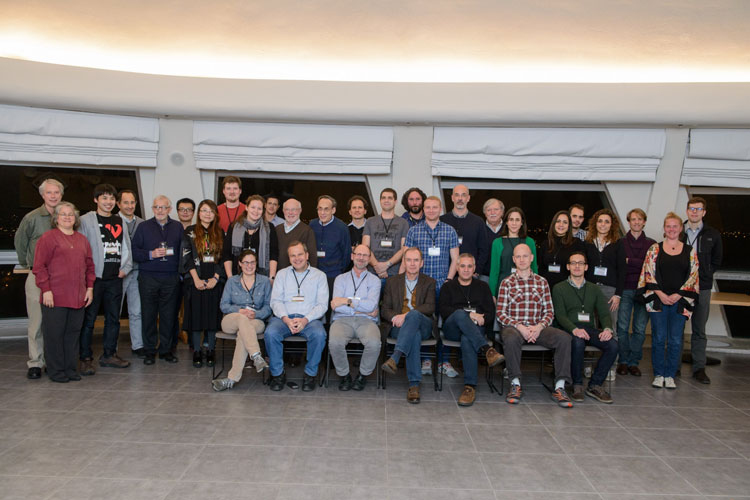
Those of us working with high-energy neutrinos always have great expectations for a new year, since the highest energy neutrino ever could show up or a joint detection of a neutrino and another cosmic messenger might point us to the much sought-after sources.
And, maybe to prove that, 2017 started with an intense workshop at the Weizmann Institute of Science in Israel. From January 2 to 15, the workshop brought together forty experts in neutrino, gamma-ray, and cosmic-ray astrophysics, including Francis Halzen, Albrecht Karle, and Markus Ahlers from WIPAC. Karle was also one of the organizers.
The goal was to discuss open theoretical questions and current and future experimental work in high-energy astrophysics and to join efforts to move forward more efficiently. “The meeting succeeded in identifying which scientific questions are most important and can be solved in the next decade,” explains Karle, who is associate director of the IceCube Neutrino Observatory and chair of the Department of Physics at UW–Madison.
Workshop attendees did talk about IceCube and reviewed what we have found out so far and what the best strategy is for a future upgrade to boost neutrino astronomy. Multimessenger astronomy was also a focus of this two-week long workshop. As we know, to increase our chances of deciphering the extreme and still unexplored universe, we should combine information from different cosmic messengers, such as ultra-high-energy cosmic rays, PeV neutrinos, and TeV gamma rays.
“We went through every lesson we have learned with neutrinos, gamma rays, and cosmic rays, and we looked into current and upcoming experiments, in order to come up with the best methods to address many of the main open questions,” adds Karle.
“We learned something every day. The group that the organizers put together was just amazing,” comments Francis Halzen, principal investigator of IceCube and a professor of physics at UW–Madison.
“The intensive discussions that we had during this long workshop were very useful for sketching a path towards the future of multimessenger astronomy,” said Markus Ahlers, a John Bahcall fellow at WIPAC.
The team is now working on a paper that will summarize their outcomes and proposals for the future. It will be a “must read” for the neutrino, gamma-ray, and cosmic-ray community.
Visit the workshop website here.
